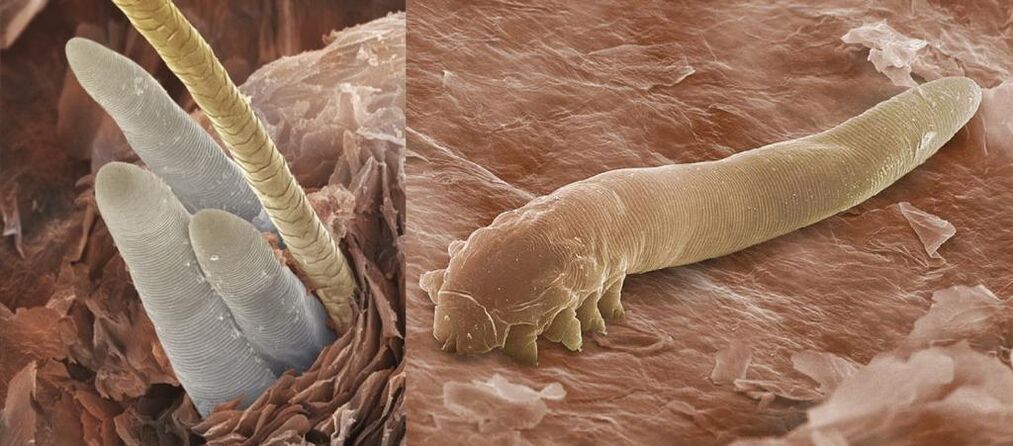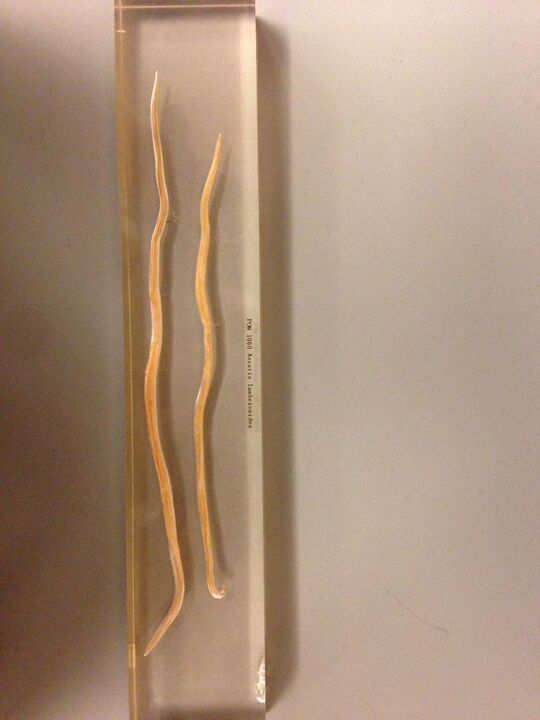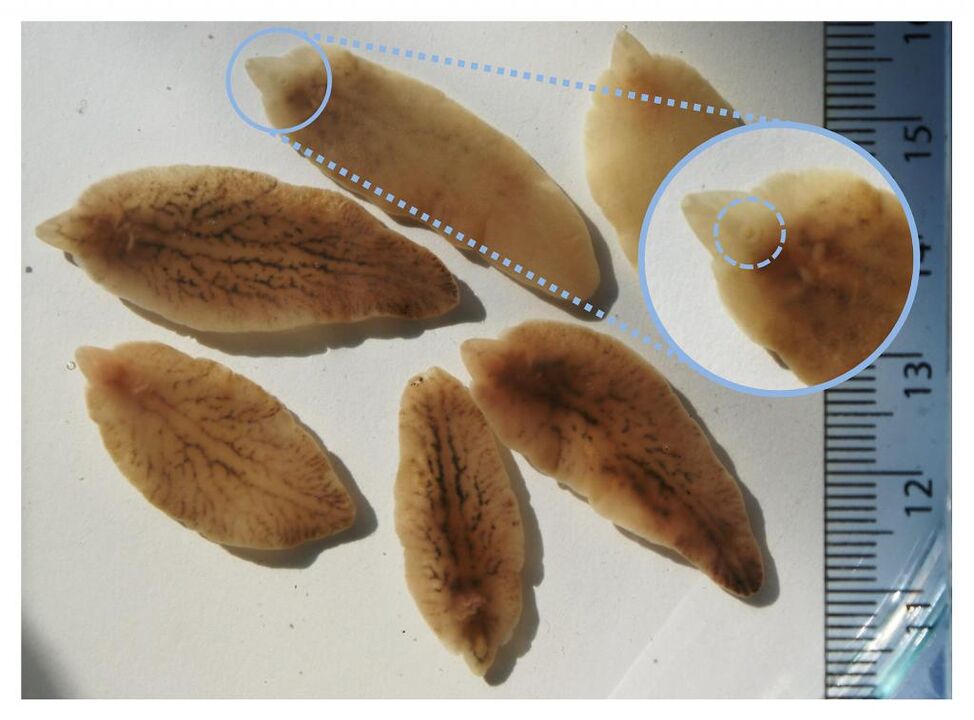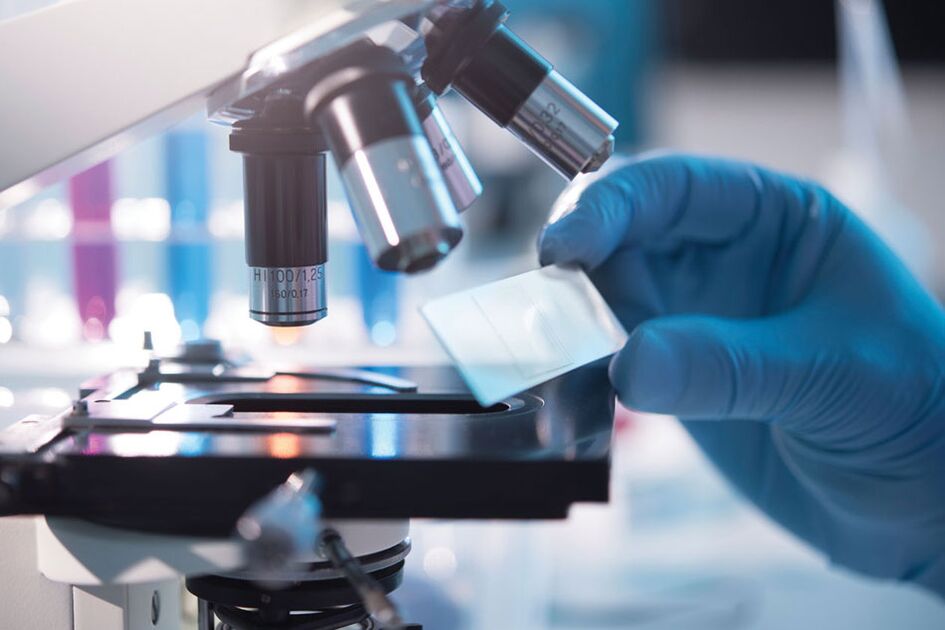Parasitic infections are a diverse range of symptoms and diseases caused by egg entering or adult parasites into the human body.Often the first signs of the disease cannot be revealed a few days, and in some cases, a few months or even years.This is due to the life cycle of the parasites and their main functions: good camouflage and maintenance of one's own life receiving nutrients from the host body.
Types of parasites and their characteristics
Parasitic infections, depending on certain properties of their manifestation, are divided into three groups:
- Ectoparasites.
The main location is the area of the human body.These include ears, fleas, ticks and bedding.They are predominantly food on human blood, although in some cases, such as grits that cause demodicosis, the main food is to excrete the sebaceous glands or dead epithelial (skin) cells. The first signs of parasitic infection are quite easy to identify, because they cause itching and incineration in their habitats.Some ectoparos are carriers of serious diseases: typhus, anthrax, encephalitis and tripanosomiasis.They cause huge damage to people's health, including death.
The first signs of parasitic infection are quite easy to identify, because they cause itching and incineration in their habitats.Some ectoparos are carriers of serious diseases: typhus, anthrax, encephalitis and tripanosomiasis.They cause huge damage to people's health, including death. - Endoparasites (protozoa).
It mainly affects the internal organs.They are unicellular in the structure, hence the name of the protozoa.Despite this, they can lead to severe forms of diseases.The main diseases of this group are a parasitic blood infection caused by toxoplasia and intestinal infections caused by amabama or giardia. - Helminths.
They are the causes of the most common forms of parasitic infections.In the human body, their development cycles generally take place in the intestines and tissues, where a manifestation of the symptoms of the disease begins.
Krugleior (Nematode)
These are parasites whose body is round in cross section.Sexual characteristics are easily different.Women are usually larger than men.But the representatives of this class also have hermaphrodites.All nematodes go through development phases: egg, larvae and adult.This class includes:
- Pinworm.The disease is caused by enterobiasis.It mainly affects the children of preschool and primary school age.
- Whipworm.Causes a trichuriasis disease.It has a characteristic body shape.2/3 of the body length has a thin diameter, reminds of human hair or thread.The other end of the body is larger in diameter and contains the guts.
- Ascaris.The disease is caused by ascariasis.Adults reach a large size 25 cm (males) and 40 cm (females).After the larva enters the human body, he passes through his stomach and enters the thin gut.From there through the pores through blood flow enters the liver, then in the heart, and then to the lungs, where it develops within 7-10 days.Then the larvae start to rise to the throat.Once they reach the oral cavity, they are swallowed again.Once in a thin hose, the larva cannot enter the bloodstream through the pores due to the great size.There grow to adults within 2-3 months.After that, the reproduction begins and the cycle repeats.The female can pass more than 200 thousand eggs a day.

Tapeworms (Cestodes)
These are parasites whose body reminds of the shape of the ribbon.The distinctive characteristic of this class is the absence of the digestive system.They include:
- Echinococcus.The disease is caused by echinococcosis.This parasite is small in size (2-9 mm) and consists of several segments and donors.The uterus of a sexually mature individual contains a large number of eggs, within which the larvae is located.The main places of localization of echinococci are liver and lungs.There is causing a chronic disease called hydatid cyst.
- Bikov Tapeworm.Causes tenniarinchiasis disease.There is a middle host in the Larve stage - cattle.Once in the human body develops in the dark hose on the stage of the ribbon.The body of adult parasites has up to 1000 segments, and can reach a length of 4-10 meters.
- Pork Tapeworm.Causes the disease of Taeniaz.From the outside, it is very similar to Tapinworma bull.It also has a medium host: pigs, dogs, camels, rabbits and rabbits.There are parasites in the bowels in humans.The size of the adult individual does not exceed 4 meters long.
- Tapice is wide.The disease is caused by dipletoobothrias.He lives in freshwater bodies of water.It uses crabs and fish as the middle host.The human body is parasiticized by the thin gut.An adult can reach a few meters in length.
Flukees
During its life cycle, these parasites can change several intermediate hosts.In humans can be parasitic in any organ.This group includes:
- Schistosomes.The disease is caused by Schistosomiasis.They can enter the human body with contact with contaminated fresh water.The parasite penetrates the skin and enters the circulation system, where it starts actively multiplied.Females can produce 300 to 3000 eggs per day.Furthermore, with the flow of blood eggs spread throughout the body and teaching their development in any body.Their body length does not exceed 0.1-0.2 cm.
- Fluces liver.The disease is caused by desisthorchiasis.The length of the adult varies from 3 to 5 cm.When he enters the human body, the bile channels, bile bladder, liver and pancreas are parasitized.It is fixed in these bodies using suction cups located on the body.

Ways of penetrating parasite in the human body
- Food route infection is considered the most common.The person becomes infected with the parasite by eating poorly washed vegetables and fruits.Meat that has not passed enough thermal processing is particularly dangerous.Also, a person becomes infected with parasitic infection if no personal hygiene rules are monitored.For example, do not wash their hands before eating.
- Transplacental route.The parasitic infection is transmitted from the pregnant woman through the bedding to the child.For example, these are diseases like toxoplasmosis, malaria or hook.
- Perkutana trail.The parasite enters the human body through the skin.These are mainly schistosomes and hooks.
- Contact track.The parasite is transmitted through dirty hands, contaminated personal belongings and underwear.This is how the ears, cats and fidders are most often transmitted.
- The path of transmission.The infection occurs after the insect bites that carry parasites.For example, malaria.
Symptoms
Many parasitic diseases do not have symptoms in the early stages.This is due to the pathogenic development phase.Each individual type of parasites is manifested differently as growing.Common general symptoms of parasitic infections include:
- Itching.
- Redness of the skin like urticaria.
- Diarrhea.
- Prison.
- Inflation.
- Nausea, vomiting.
- Cramps and pain in gastrointestinal tract.
- Loss of body weight without diets or increased physical activity.
- Fever.
- Great body temperature (38-40 ˚C) for a long time.
- Extended attacks of dry cough.
- Increased lymph nodes.
- A painful sensation in the muscles.
- Psycho-emotional disorders.
Diagnostics

If you suspect the presence of parasitic diseases, you need to pass a series of tests.The diagnosis of parasitic infections allows us to determine the presence or absence of parasites, its type and location in the body.The obtained data will help a doctor to make a correct diagnosis and prescribe the correct treatment.
Diagnostic methods include:
- View chair.Allows you to determine the presence of most types of parasites that live in the intestines.Their eggs, larvae and bodily segments are excreted in feces.There are two types of analysis:
- The chair sample is examined for Helmintth eggs and larvae.The analysis is delivered in the laboratory, where the doctor makes stains and examines them under a microscope.This method is often used, but is not accurate enough.To make a final diagnosis, the patient must pass this test up to three times with short time intervals.This is due to the life cycle of the parasite and the egg laying, which were discovered by this research method.
- Scraping (washing) from the anus fold.This test is used to detect only one type of Helminth - Pinworms.Parasitic infections are more often in children than in adults.For this reason, this analysis is done mainly for children.The laboratory technician pulls cotton or glass care for eyes in water or glycerin and washes it from periana folds.Then the resulting material is applied to the glass slide and is examined below the microscope.This analysis is also performed using a different method: a laboratory assistant pastes a piece of adhesive tape into anal passage, pressed and peeled.The adhesive tape is then stuck on the glass slide and is also seen under a microscope.The parasite is diagnosed quite precisely.Using these methods, the laboratory assistant can examine not only trapped eggs, but sometimes adult individuals.
- Testing of cerebrospinal fluid, sputch, with content for twelve, urine.Prescribed based on the results of the patient's research to determine the presence of the parasite and determine its location.These biological fluids are analyzed using microscopy and macroscopy.First, the resulting sample is examined for the presence of adults, and then microscopy to detect egg detection and parasite colors.
- Blood test.Modern blood test methods for parasitic infections enable the determination of the presence and type of pathogen with great accuracy.Three types of such diagnostics are used:
- Serological reactions.It allows you to determine the presence of parasite antibodies in the patient's blood serum.This method is considered very specific, but inferior to PCR diagnostics.
- PCR diagnostics.This method is based on identifying DNA parasites in any biological fluid taken for analysis.
- Genetic research.Includes the detection of parasite genome in the patient's blood sample.This method is used much less often than everyone else, but it has a great accuracy.
- Testing of material biopsy and lymph nodes.For this analysis, the doctor is ejected by a small part of the organ, tissue, or the entire lymph node and sends it for histological examination.This is how the presence or absence of parasites is diagnosed.
Recommendations for preparation for testing
Before taking tests for parasitic infections, you need to prepare for them properly.If the recommendations are respected, the accuracy of the diagnosis increases, as the material does not contain interfering factors that affect the efficiency of research methods.
Preparation for test chairs:
- Antibiotics, anti-inflammatory drugs and anticids should be stopped.The use of medicines and other drugs containing bismuth and iron is also unacceptable.
- If a barrier or colonoscopy is performed, during which the hose cleaned is performed, then the test chair can be recorded only after 2-3 days.
- Not recommended to donate a chair if menstrual bleeding or hemorrhoids are worsening.
Preparation for blood test:
- It is necessary to stop taking pharmacological medications that affect the blood number.
- Three days before the test you should follow the light diet, do not eat oily food and give up alcohol.
- The blood test for parasitic infections is taken on an empty stomach.Drinking small amounts of clean drinking water is allowed.
Special preparation is usually no need for other tests.You will only need to follow the doctor's recommendations.
Treatment
Unfortunately, the symptoms of parasitic infections cannot always be detected in the initial phases of the disease.In such cases, treatment begins late.It is important to understand: the longer the parasite remains in the body, the harder to be solved.
The therapy of infectious and parasitic infections is divided into two areas:
- Symptomatic treatment.Whose goal is to eliminate the clinical manifestations of the disease.They include lowering body temperature, releasing from redness and itching and normalization functioning the gastrointestinal tract.
- The etiological treatment of parasitic infections is focused on removing the causative agent of the disease.
In some cases, operation may be necessary.It applies to alveococosis, echinococus and some types of tremakers infection.
When the body is dehydrated, solutions containing salt are prescribed.
Only a doctor may prescribe the treatment with parasitic infections based on laboratory tests and talk talks.
Prevention
It is very important to observe the prevention of parasitic infections.In most cases, this will help prevent pathogenes to enter the body.

Preventive measures include:
- Compliance with personal hygiene rules: You need to wash your hands before eating food, after visiting the toilet and return home from the street.
- Vegetables and fruits should be washed well.
- It is necessary to perform sufficient heat treatment of meat, fish and seafood.
- The tap water must not be used as drinking water, because may not always be free parasites.Using the initial filters as an additional cleaning will not help.The best option would be to drink cooked or bottled water.
- If pets live at home, they should be wrapped once in six months.You should also limit contact with your pet if it shows signs of parasitic diseases and contact the veterinary clinic.
- You should iron underwear (especially children) after washing.
- After visiting exotic countries, when we work with land, as well as employees of children's institutions, it is recommended to examine once a year for the presence of parasitic infections and, if necessary, implement a drug prophylaxis.
























